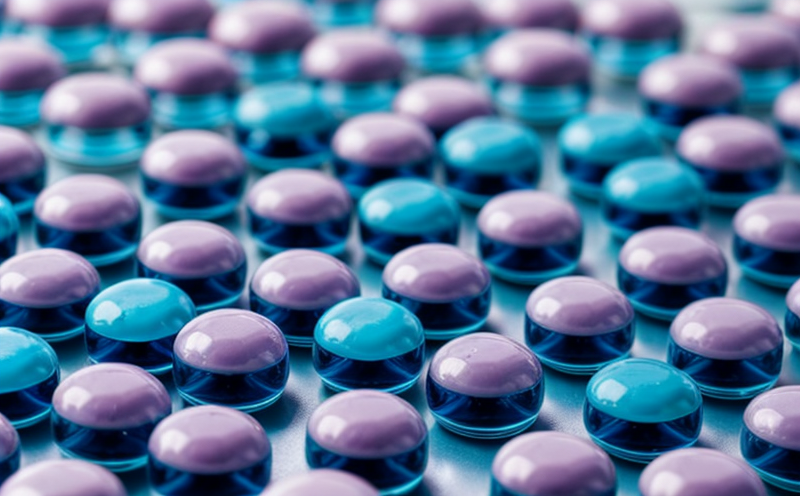USP Microbial Characterization Testing
The United States Pharmacopeia (USP) [1] is a critical standard that ensures the quality, safety, and efficacy of pharmaceutical products. USP , titled "Microbial Characterization," provides robust guidelines for identifying and characterizing microorganisms associated with drug substances and excipients to prevent contamination and ensure product integrity.
This service focuses on the rigorous characterization process outlined in USP [1] which involves the identification, enumeration, and qualification of microorganisms present in drug products. This is particularly important for ensuring that the biological contaminants do not pose a risk to patients. The service adheres strictly to USP guidelines to meet regulatory requirements.
The process begins with sample collection, where specific attention is given to ensure that the specimens accurately represent the product in question [2]. Samples are then prepared using techniques approved by USP , which may include dilution and plating methods. The samples are incubated under controlled conditions to allow for microbial growth, making it possible to isolate and identify the microorganisms present.
Identification is performed through a variety of means including but not limited to phenotypic tests (e.g., Gram staining), biochemical profiling, and molecular techniques such as polymerase chain reaction (PCR) or DNA sequencing. The goal here is to determine the species-level identification of any microorganisms found in the sample [3]. Additionally, quantitative methods are used to enumerate the microorganisms present, which helps in understanding their potential impact on product stability and safety.
Qualification involves assessing whether these identified microorganisms meet specific criteria for acceptability as per USP standards. This includes evaluating the tolerance of the microorganisms to various environmental conditions such as temperature, pH, and osmotic stress that are relevant to the intended use of the drug [4]. The aim is to ensure that any microorganisms present do not compromise the efficacy or safety profile of the drug product.
The results of this characterization testing provide critical information for pharmaceutical manufacturers and healthcare providers. This data can be used to make informed decisions about process changes, batch release, and ultimately patient safety [5]. By adhering strictly to USP guidelines, we ensure that the results are reliable, reproducible, and compliant with international standards.
The following table outlines a typical workflow for microbial characterization using USP methods:
| Step | Description |
|---|---|
| Sample Collection | Collection of representative samples from the drug substance or excipient. |
| Preparation | Dilution and plating to allow for microbial growth. |
| Incubation | Inoculation under controlled conditions to facilitate microorganism propagation. |
| Identification | Use of various methods like phenotypic tests, biochemical profiling, and molecular techniques. |
| Qualification | Evaluation against USP criteria for acceptability. |
The next section will explore why choosing this test is essential in ensuring the quality of pharmaceutical products.
Why Choose This Test
- Ensures compliance with USP guidelines, a critical standard for pharmaceutical products.
- Provides robust identification and enumeration of microorganisms present in drug substances and excipients.
- Facilitates the qualification process to ensure that identified microorganisms are acceptable as per USP criteria.
- Aids in making informed decisions about product release and batch acceptance based on reliable, reproducible data.
The importance of microbial characterization cannot be overstated. By adhering strictly to USP guidelines, pharmaceutical manufacturers can ensure that their products are safe and effective for patients. This service not only meets regulatory requirements but also enhances the overall quality control process within a laboratory setting.
Environmental and Sustainability Contributions
The microbial characterization testing outlined in USP has significant environmental and sustainability implications. By ensuring that only acceptable microorganisms are present in pharmaceutical products, we minimize the risk of contamination during manufacturing processes. This reduces the likelihood of product recalls and associated costs for both manufacturers and healthcare providers.
In addition, adhering to strict USP guidelines helps reduce waste by ensuring that batches meet quality standards before they proceed further in production. This not only saves resources but also contributes positively to sustainability efforts within the pharmaceutical industry [6].
Use Cases and Application Examples
This section provides some practical examples of how USP microbial characterization testing can be applied in real-world scenarios.
| Use Case | Description |
|---|---|
| New Drug Application (NDA) | Microbial characterization is conducted as part of the NDA process to ensure that all materials meet regulatory standards before approval. |
| Batch Release Testing | Microbial characterization helps in determining whether a batch can be released for commercial distribution based on USP criteria. |
| Routine Quality Control | Ongoing microbial characterization ensures that the manufacturing process remains stable and free from unacceptable microorganisms. |
- Validation of Manufacturing Processes: Microbial characterization can be used to validate new or modified manufacturing processes by ensuring that any introduced changes do not lead to increased microbial contamination [7]
- Risk Management: By identifying and characterizing microorganisms early in the process, potential risks associated with product safety can be mitigated.





